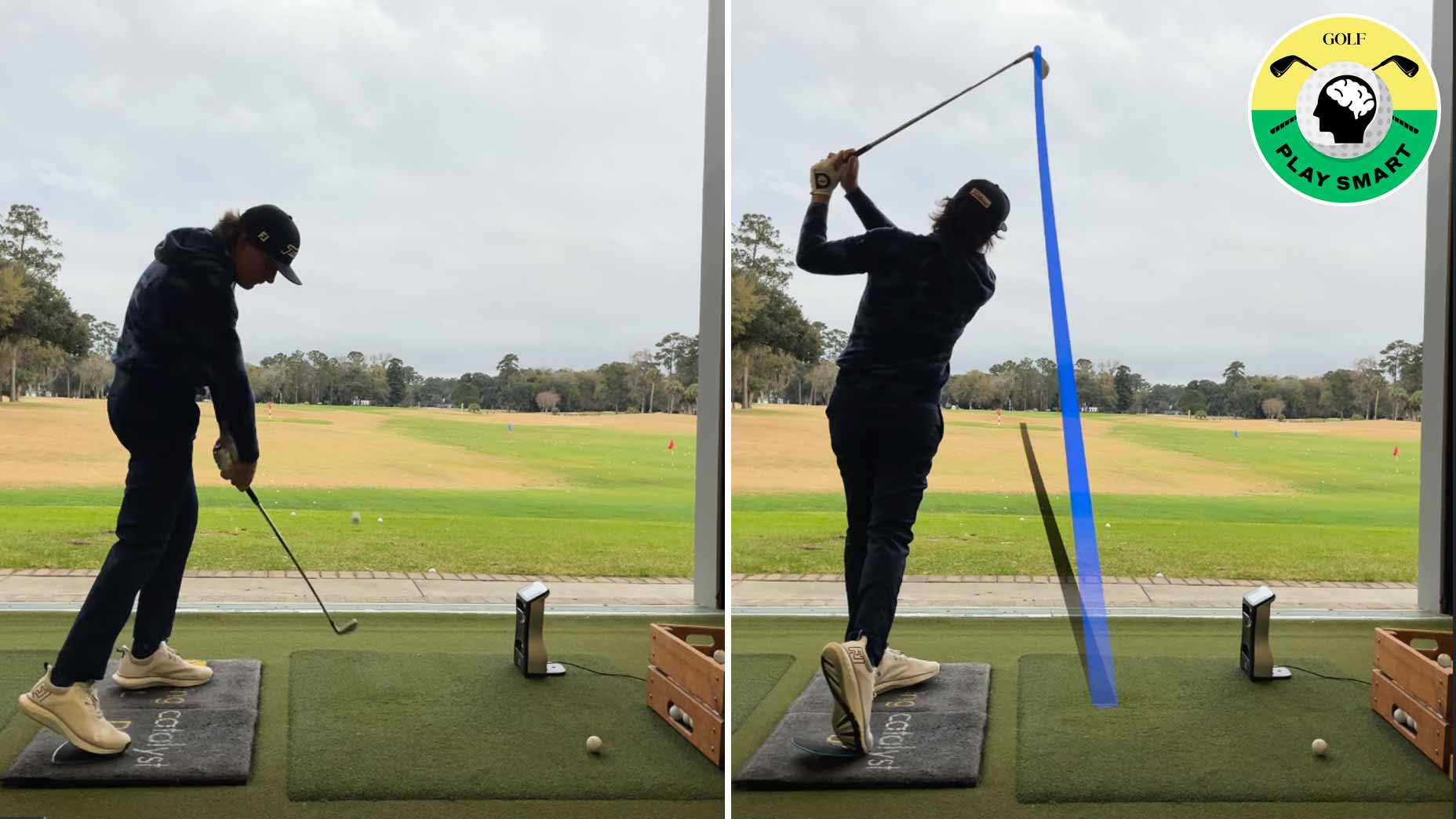Have you ever taken a snapshot of one of your rounds? Say, for example, you just finished posting a 96. Have you ever actually taken the time to write down the clubs you used, and how often you used them? You may not realize it, but you can learn a lot about your game — and how to practice — from this information.
In the photo below, I’m standing on the beautiful and meandering Shinnecock Hills G.C., site of last month’s U.S. Open. If you’ve never played Shinnecock before, believe me when I tell you that for most weekend golfers, shooting better than 96 on this course is an achievement! You may also have noticed the unusual array of clubs and balls on the ground in front of me. What I’ve done is created five groups that together represent a typical round of 96 shots, in terms of the number of shots hit with each type of club:

Snapshot: Number of strokes within each club group
PUTTER: 40 shots
WEDGES: 19 shots
IRONS: 14 shots
WOODS: 20 shots
MISCELLANEOUS (Penalty, trouble and escape shots): 3 shots
TOTAL SCORE: 96
As you can see, the putter—by a large margin—is the most frequently used club in your bag, while woods and wedges come in a close second. So here’s my question to you: Using this information, is there a better way to apportion your practice time?
From what I’ve seen over the years, weekend golfers dedicate almost 90 percent of their practice time to their long games (that is, to their irons and woods). They devote perhaps 5 to 10 percent of their serious practice time to their putting, and they spend practically no time working on their wedge games. Most also spend a majority of their warm-up and practice time grooving or rehearsing their full swings on the range; they may manage to get a few putts in, but then it’s usually off to the course for an adventure-filled 18.
Take a look at the photo again. Would it not make sense to consider modifying your practice routine based on what this snapshot is showing you? You should still warm up and activate your golf muscles, but a wise move would be to devote a third of your practice time to your wedges and another third to your putting game. And be sure to conduct this practice with focus and purpose.
Don’t just drop a few balls and putt without a plan: Do a few long putting drills to help you figure out the green speed, and always include a short putting drill to keep that part of your game sharp. For wedge practice, spend time grooving your wedge distances—you’ll be amazed at how quickly you start knocking down pins when you know exactly how far you can carry each wedge.
But hey, don’t just take my word for it. Keep a written record of how many times you use each club over the next couple of rounds. That way, you’ll know for sure what you should be focusing your practice efforts on. I can assure you that the more time you spend on the most frequent shots in your game, the more they’ll improve and the faster your scores will drop.





